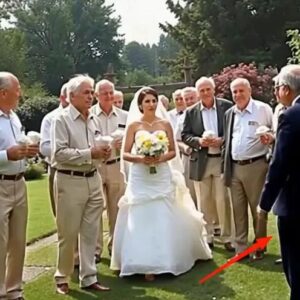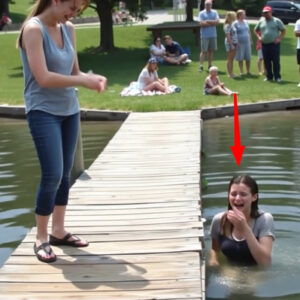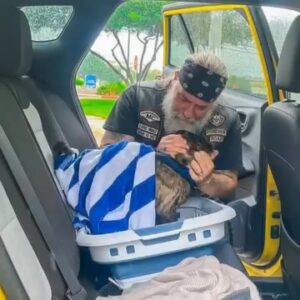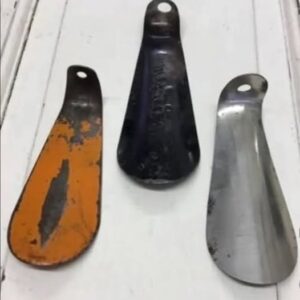We thought it was just a fun Saturday craft thing. My aunt hosted a little art party for the kids, complete with aprons, gloves, and an entire counter full of squeeze bottles. My cousin Ryn was obsessed with whales at the time, so naturally, she poured half the blue and white paint into a swirling sea on her canvas and added this ghostly humpback shape in the center.
It was pretty, honestly—looked like something from an eco charity ad. She called it “Where They Go When We Sleep.”
Nobody thought twice about it.
Until my uncle, who works IT for the city, pulled me aside two days later with his iPad. “Tell me if I’m losing it,” he said.
It was a NOAA satellite map from the western Pacific. And right there, just off the coast of Guam, was a large, pale whale-shaped bloom—not a boat, not an oil spill. It looked identical to the pattern on Ryn’s canvas. Every swirl. Even the faint arc near the tail.
He reported it. They told him it was “natural turbulence.” But a week later, it appeared again. This time near Chile. Same exact shape.
I asked Ryn if she remembered what inspired the painting. She shrugged and said, “I saw it when I blinked too long. Like a flash.
But the water was purple the first time. I changed it to blue because it felt better.”
We all laughed nervously at the time. Nobody wants to think a kid’s afternoon painting could somehow bend reality. But then came the jellyfish.
Ryn painted those next. Giant, glowing jellyfish with little sparks around their tendrils. She said they looked sad, so she gave them stars for eyes. That canvas she titled “Too Bright to Follow.”
Five days later, a marine biology Twitter thread went viral. Divers off the coast of the Seychelles had encountered a previously undocumented jellyfish species—translucent, glowing, and with something like light flecks near its head. One diver called it “heavenly” and said it made him cry inside his mask.
You can imagine the tension that built in our family after that.
My aunt, who always had a flair for the dramatic, started locking up the art supplies. “What if she paints something bad?” she whispered to me one night after Ryn had gone to bed.
“She’s seven,” I said. “She’s not summoning monsters.”
But even I wasn’t fully convinced.
The moment it all tipped over was the day Ryn painted the door.
It was a simple thing, really. Just a pale arch standing on black sand under a sky full of tiny moons. She said it was “a door for the quiet ones.” Nobody knew what that meant, not even her. She left it unsigned and didn’t want it hung in the house.
That night, she had her first sleepwalking episode.
We found her in the backyard, barefoot, standing with her hand pressed against the wooden fence. “I almost found them,” she mumbled when we called her name. “But I didn’t knock right.”
She didn’t remember any of it the next day. And she wouldn’t touch a paintbrush for nearly two weeks.
Meanwhile, my uncle kept checking satellite maps.
He found another one of her pieces mirrored in the clouds over New Zealand—this spiraling cyclone that had a ring of clear sky in the center, like an eye. Exactly like her canvas, which she’d called “Whisper Circle.” It had been drying in the hallway when the storm formed.
We stopped showing her the news.
Still, we couldn’t stop the world from seeing her.
An online art community had picked up some of her older pieces after my cousin Tommy posted a few photos to Reddit, thinking it’d be funny. They got thousands of upvotes. Then emails started coming. A gallery from Tokyo. A researcher from Finland. A journalist from Vice.
My aunt went full mama-bear mode and pulled everything down. “No more art online,” she declared. “No interviews, no exhibitions.”
But Ryn kept dreaming.
She wasn’t painting anymore—at least not on canvas—but every few days she’d scribble something in her notebook. Tiny pencil sketches. A ship with no windows. A sky made of feathers. A sun melting into teeth.
I peeked once, and she quietly closed the book on me.
“I don’t want them to find me,” she whispered.
That gave me chills.
Then one afternoon, things escalated.
I was walking home from school with Ryn and noticed her staring hard at the clouds. She looked…frustrated. Not scared, just annoyed.
“What’s up?” I asked.
“They keep changing the shapes,” she muttered. “They don’t want me to remember.”
That night, she finally broke her art silence.
She pulled out a fresh canvas, mixed purple and gold, and began painting something fast and messy. She didn’t even ask for help setting up. Just got right to work with this wild, urgent energy.
By morning, there it was.
A ship—not like a boat, more like a cathedral floating sideways, with massive wings instead of sails. It had no crew, no windows, just rows of arches and golden lines running along the hull.
She titled it “We’re Not Supposed to See It Yet.”
And then the sightings started.
Fishermen off the coast of Norway reported a strange “structure” on the horizon that vanished before the coast guard arrived. An oil rig worker swore he saw a “floating building” in the South Atlantic and described it exactly like Ryn’s painting. Even a cruise ship passenger posted shaky footage of something glowing just below the surface during a foggy morning near Alaska.
We were terrified.
It was like the world was trying to catch up to her. Or maybe her paintings were trying to catch up to the world.
But here’s the thing—nothing bad ever happened. No attacks. No freak storms. Just sightings. And every time, those who saw them reported feeling…calm. Or nostalgic. Some said it reminded them of dreams they’d had as children.
One old woman even claimed it helped her remember her late husband’s face more clearly.
Something was at work, but it wasn’t evil. At least not yet.
Then came the twist.
One day, while we were cleaning the garage, I found a box of old paintings my aunt had stashed away from when she was younger. Turns out, she used to be an artist too. And the weird part? A few of her paintings looked eerily like Ryn’s.
Same spiral motifs. Similar color palettes. One even had a whale—except it was upside down, like it was sinking instead of swimming.
I showed her the box. Her face went pale.
“I stopped painting after Ryn was born,” she said. “It felt like…something else was painting through me. I couldn’t sleep right. I had dreams I didn’t understand.”
“Why didn’t you tell anyone?”
“Because it sounds insane.”
She looked at me, then whispered, “But she picked it up. Whatever it is. She inherited it.”
That’s when I knew this was bigger than art. It was something passed down. A kind of echo through the bloodline.
We didn’t tell Ryn. Not yet.
But things changed again after her eighth birthday.
She asked for a huge canvas—almost as big as a door. We didn’t question it. My aunt, reluctantly, bought it for her and left her alone to paint.
She worked on it in secret for nearly a month.
When she finally showed us, none of us spoke.
It was a painting of Earth. But not as it is—more like a version that had been forgotten or undone. The continents looked familiar but covered in vibrant greenery, and massive creatures roamed skies lit by twin moons.
At the center was a child holding a broken brush, with paint dripping into a river.
The title was “Before We Knew How to Forget.”
Two days later, something changed in Ryn.
She smiled more. Slept through the night. Even went back to watching cartoons and making pancake faces at breakfast.
The sightings stopped.
No whales. No ships. No strange weather.
It was like she’d painted the last note of a song, and everything had settled.
She hasn’t painted since.
Not because we told her not to. She says she just doesn’t feel the need anymore. “It’s quiet now,” she said one morning while tying her shoes. “I think they got what they needed.”
“What do you mean, they?”
“The ones on the other side of the door,” she replied. “They’re painting now too.”
I still check the satellite maps. Nothing unusual lately. Just clouds and waves and the occasional storm.
But sometimes, when I blink too long, I swear I see those jellyfish—floating just out of sight.
And sometimes, when I can’t sleep, I think about how a child with no training, no agenda, just love for the sea, somehow reminded the world of things it had buried deep. Whales. Stars. Forgotten skies.
The lesson, I think, is that creation has power. And sometimes, the purest heart sees the clearest.
Art is more than paint on canvas. Sometimes it’s a memory the world is trying to whisper back.
So keep creating. Keep dreaming. You never know what’s listening.
And if this story made you feel something, share it. Like it. Let someone else remember the wonder too.





